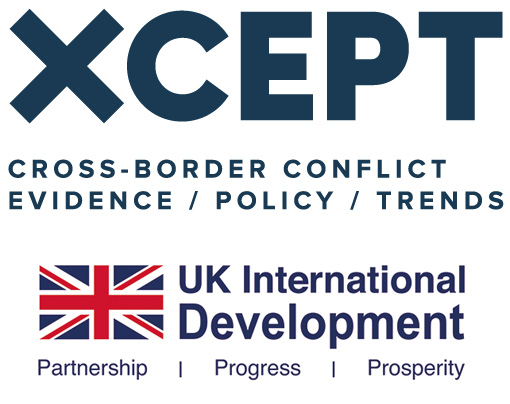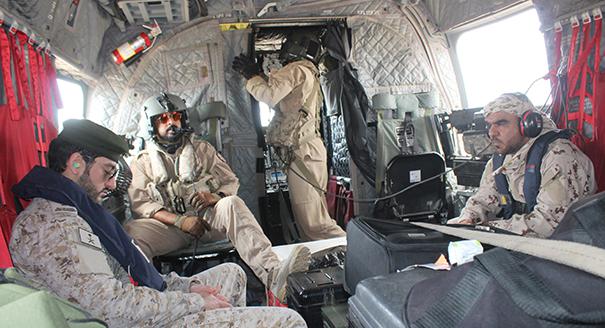The attack against the United Arab Emirates (UAE) on January 17 was a reaction by Ansar Allah, better known as the Houthis, to neutralize the Emirati role in recent military operations in the governorates of Shabwa and Ma’rib. This will force the UAE to decide on its role in the Yemen war, where it has few good options.
In the latest incident, the Iran-backed Houthis launched a drone attack near Abu Dhabi airport, as well as a missile attack, according to their spokesman. The drone attack set fire to fuel trucks, which exploded and killed three people.
To understand the context, we need to examine what has happened in Yemen in recent months. Last November, forces forming part of the Saudi-led coalition fighting the Houthis redeployed from Hodeida Governorate to the Shabwa front. Among them were the Giants Brigades, a militia supported by the UAE that is better organized than any of the other military units backed by the coalition.
Through such a step, the coalition sought to redefine the rules of engagement in Yemen. This included the sending of allied forces to other fronts, after the freezing of the Hodeida front thanks to the Stockholm Agreement. The main objective was to halt the Houthis’ military progress in Shabwa and Ma’rib, particularly after the group took over several districts of the two governorates in the past three months. These advances occurred as negotiations in Oman between Saudi Arabia and the Houthis faltered.
The coalition’s new military plan required a consensus between the Saudis and Emiratis. This was facilitated by administrative changes in Shabwa in order to meet the UAE’s conditions for green-lighting the participation of its local allies in the battle. The UAE had demanded the removal of the governor, Mohammed bin Adyo, who is backed by the Islah Party affiliated with the Muslim Brotherhood. He was replaced by Awad al-Awlaki, who has good relations with the UAE. In addition, the UAE-backed Shabwani Elite Forces also returned to Shabwa after changing its name to the Shabwa Defense Forces.
In early January, the Giants Brigades began a military operation to push the Houthis out of the districts they controlled in Shabwa. In less than ten days, they and Yemeni government forces retook the districts of Usaylan, Bayhan, and large parts of Ayn. The battle moved to the Harib District of Ma’rib. Control of Harib would allow coalition-backed forces to take all of Ayn and dominate supply lines on Ma’rib’s southern front, to the Houthis’ disadvantage.
The reentry of UAE-backed forces into the battle against the Houthis was a significant step, after the Emiratis had announced in July 2019 that they were withdrawing from Yemen. At the time the Houthis claimed that they had reached an understanding with the UAE in which the Emiratis agreed not to escalate the situation in western Yemen, otherwise the UAE would be targeted. It is notable that, until this week, Houthi attacks with drones and missiles—a capability they acquired in mid-2017—had not encompassed the UAE, but were exclusively directed against Saudi cities. That explains why Houthi leaders mainly threatened the UAE during the recent military operations in Shabwa.
One of the main unanswered questions is whether the Houthis were actually the ones who launched the attack against Abu Dhabi, or whether their role was to claim responsibility for an attack carried out by Iran. The distance between Sanaa and Abu Dhabi is around 1,500 kilometers and there are doubts that the Houthis could have carried out so accurate a strike from Yemen. Many recalled the attack against the Aramco facilities in Abqaiq in September 2019, for which the Houthis claimed responsibility, but with which a United Nations committee later disagreed. Observers pointed the finger at Tehran as being the real culprit in that attack.
When the attack against Abu Dhabi took place this week, it may not have been a coincidence that the Houthi spokesperson, Mohammed Abdulsalam, was in a meeting with Iranian President Ebrahim Raisi. Last week, Abdulsalam met with Iranian Foreign Minister Hossein Amir-Abdollahian in Oman. Tehran appears to be benefiting from the Yemen war to intimidate its Gulf neighbors and show them that they will have to take Iranian interests into consideration in the future, otherwise their security and stability will be threatened.
In terms of destruction, the attack against the UAE was relatively limited. But its real impact is that it brings home to Emirati leaders that, if they don’t change their behavior, their country will be included in the Houthis’ target list from now on. The attack was preceded by the Houthis’ seizure of the Emirati ship Rawabi off the Hodeida coast in the Red Sea last week. The ship was transporting medical and military equipment belonging to Saudi forces from Yemen’s Socotra Island.
This incident will put the UAE in front of two choices. The first is to retreat from the escalation in Ma’rib and focus its operations on areas far from the front line with the Houthis. If the UAE steps back, it is likely that the attack this week will remain just a message from the Houthis to remind the UAE not to increase its military involvement. However, this would mean that the Emiratis would remain vulnerable to Houthi attacks or that of their backers. Moreover, such a choice would also weaken again the UAE’s partnership with Saudi Arabia.
A second choice would be, on the contrary, for the UAE to escalate its military, political, and diplomatic involvement in Yemen. However, to do so it would need to strengthen its air defenses to protect against any potential military responses in the future. It would also force the UAE to reconsider its strategy in Yemen and harmonize its military approach there with Saudi Arabia. Moreover, that could have a negative impact on the Emiratis’ relations with Iran, and could undermine the recent thaw in relations between the two countries.
Whatever the UAE decides, the repercussions of the latest incident will remain present in how the conflict in Yemen progresses. This is only the latest example of how the war has spread beyond the confines of Yemen to have major implications for the wider region. Such a direction underlines why a resolution to the conflict is more imperative than ever.







